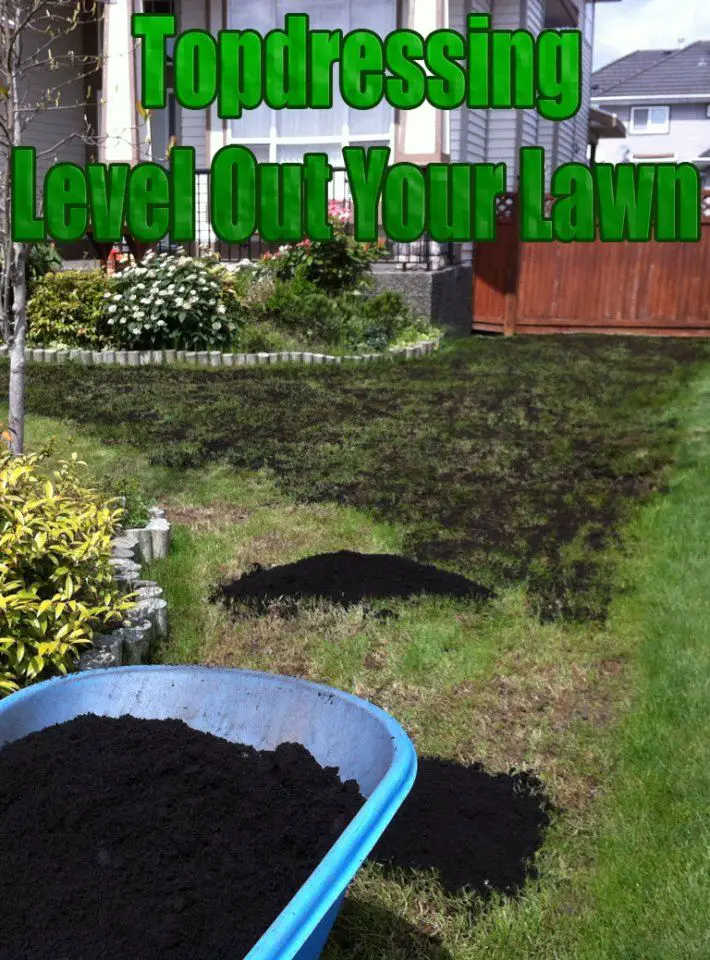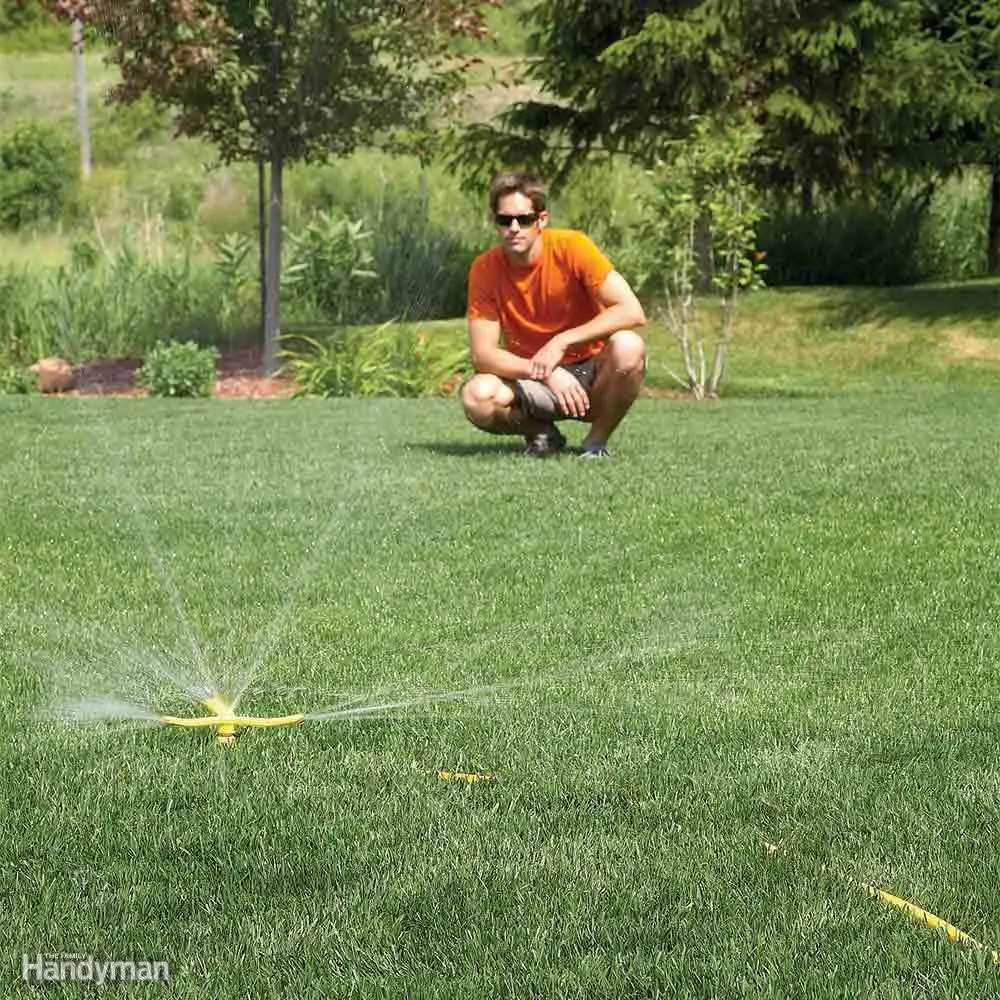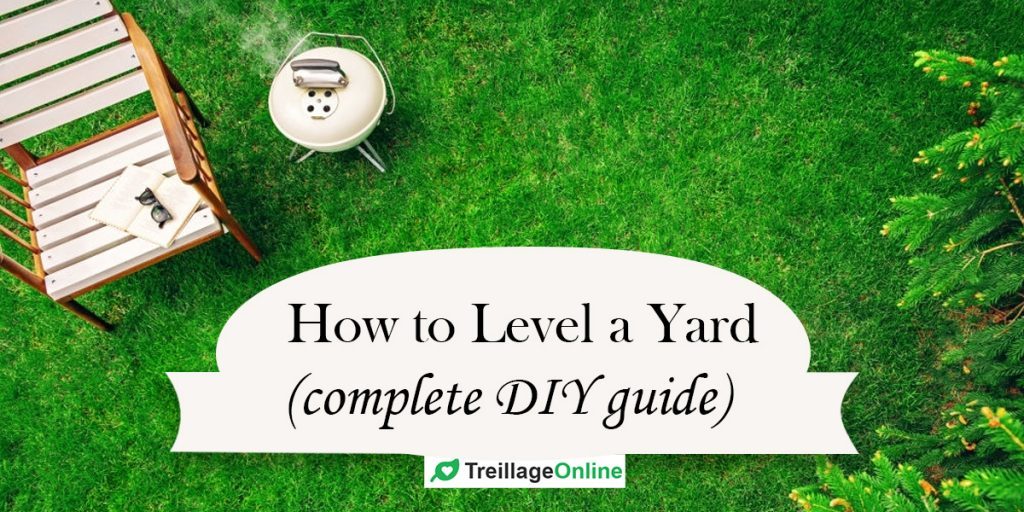My Experiences Leveling My Lawn With Sand
I guess I should introduce myself. I have been a lurker here for several years, but have always used the site to learn and research. I never felt experienced enough to have anything useful to contribute until recently so I never joined the site.
About a year ago I purchased my first home, a foreclosure in North Georgia. It is a 4 year old house that has always had renters in it. The renters severely neglected the lawn and landscaping. Over the past year I have spent a ton of time planting shrubs and fixing the lawn.
I spent a bunch of time researching how to level my lawn and everyone has a different opinion as to the best way to do it. I am not claiming to be any type of expert, but I would like to document my experiences in leveling my lawn. Hopefully someone will find this useful as I have learned so much from the site, I am hoping to be able to give back a little to the forum.
About the Lawn:I have somewhere around 4,000 sq/ft of Bermuda. I am unsure of the type. It is probably some cheap builder grade stuff but I am unsure. The front yard gets a ton of sun and grows great. The back yard does not get any afternoon sun and grows much more slowly. I do not have an irrigation system. I use a old honda self propelled mower.
My goal is to level the lawn enough to use the lowest setting on the mower and have the lawn grow super dense.
Once I was done watering I applied some Vigoro SuperGreen. It is a 36-0-4 if I remember correctly.
Leveling High Spots In The Lawn
High spots bring about mowing problems and hurt drainage. To eliminate the spots, you need to redistribute the soil that makes up the spot.
You need to take care not to bury the nutrient-rich topsoil that grass and other plants grow best in.
Step 1: Begin with removing grass from the high spot and surrounding areas using a shovel. Dig out the topsoil layer and place it in a pile for later use.
Step 2: Using a tiller, till the exposed soil to a depth of 6 inches. Remove any pieces of plants, turf, and rocks larger than 1 inch in diameter that you might encounter when tiling.
Step 3: To smoothen the soil and match the surrounding yards grade, use a garden rake to rake the soil. Its also wise to roll the soil with a lawn roller to better identify the uneven areas. Rake or till more if necessary.
Step 4: Cover the tilled and leveled law area with the topsoil you previously removed once you are satisfied. Rake the soil one more time to distribute the topsoil evenly over the area.
Step 5: To cover up the bare soil, sow grass seed. You can also lay sod in the area.
Step 6: To cap it, run the lawn roller over the area again. Ensure you press the grass seed deep into the soil.
Pro tip
Things To Remember While Yard Leveling
For best results keep these tips in mind:
- The best time to level your yard is during the dry season. If done during a rainy season there is a good chance for soil erosion
- Proper backfill at the foundation is very important. If the soil is too close to the wall cladding then you risk termites getting into your house
- Any soil removed from the lawn can be reused while grading
Also Check: Before And After Trugreen
Measure The Area You’ll Be Sodding
Measure the area youll be sodding. Take careful measurements so that you dont pay for more sod than you need. Order roughly 5 percent extra , so youll have enough sod to cut and fit around curves. Purchase sod through a garden center or directly from a sod farm, if theres one near you. The supplier you purchase from should ask detailed questions about your lawn, including hardiness zone, sunlight vs. shade, how intensely youll use the grass and other specifics. These answers determine the types of grasses that will be in your sod. Make sure sod is delivered within 24 hours of being cut. Plan to lay it the day its delivered.
When Should You Level Your Yard

Like most other gardening practices, leveling your lawn will get you the best results when done at the right time.
Spring is the best season for leveling your yard and other correction practices.
During this season, the grass has adequate time to grow, and the soil has enough moisture to set the top dressing.
However, early spring can be the worst time because of snow-melt. The soil is usually soft and can lead to deeper depressions and low spots.
Therefore, you should wait till mid or late spring to level your yard. During this time, the grass is in its active stage, and the soil is somewhat dry enough to manipulate.
Also Check: How To Make Lines In Grass
Make Sure You Have Permission
This is an important first step thats easily missed.
Check with utility companies and your local council to make sure there are no cables under your garden that will be disrupted, and whether the work you are planning requires planning permission.
If it does require planning permission, make sure you have acquired this before starting work!
Levelling A Sloping Garden: Diy Or Hire In Help
While it is definitely possible to level a sloping garden without professional help, please bear in mind that this is a big job!
Make sure you know what youre signing up for before the shovel breaks ground.
The most important thing is getting the retaining wall right.
If this stands up and holds back the soil behind it, happy days. If not, youre looking at potentially timely and expensive repairs.
If you do the job yourself and manage to get a retaining wall built, you need to make sure it is strong enough.
Weve read horror stories of people building walls that collapse after the first rainfall, and being forced to hire professional help to fix the mess.
If you dont feel confident with the scale of the job, it may be best to speak with contractors about your options.
The initial cost could save time, hassle, and even money in the long run.
Read Also: How To Get Rid Of Johnson Grass In Lawn
Why You Should Not Use Plain Sand Only
Some folks rush and distribute pure sand over the low-lying grassed area in the hope that this will do the job. But adding sand alone can do more harm than good. Unfortunately, it can contribute to further drainage issues, especially if the soil is on the clay side. Besides, sand dries out quickly in the hot summer months and can cause drought-like damage to the grass.
What Youll Need To Level A Slope
This is a big job, but the list of tools youll need isnt very long.
- A couple of stakes and some string for measuring the rise and run of your current garden.
- A spirit level to check things are flat.
- Water to moisten your soil.
- A shovel to dig with.
- The materials for your retaining wall .
- A soil compactor to squash everything down.
- Grass seed or turf, for your nice new lawn.
You May Like: Average Cost Of Trugreen
Why Is My Lawn Uneven
Soil is amazing! Within the relatively small area of a domestic lawn there can be several areas with different soil types. Maybe theres a mineral seam running through the lawn, or an old river bed. Perhaps parts of the lawn have been used for different things in the past. One of my customers has grassed over her old vegetable garden but in certain weather conditions you can still see where they were.
If youve ever watched the TV program Time Team youll know that the soil in a garden can give us clues as to what was there hundreds of years ago. So maybe the dips in your lawn are a hint that theres treasure beneath ityou never know!
Top Dressing For Shallow Bumps
Top dress the low spots with a mixture of topsoil, compost, and sand.
Shovel 2-3 centimetres onto the low spots and rake the mixture in. Keep working the mixture into the low spots spreading out the soil mix so it doesnt smother and kill the grass.
Keep going until its level and then gently water the soil to release any air pockets. Top up the soil as necessary.
Read Also: What Oil Do Lawn Mowers Use
Mow Your Lawn Before Leveling It
It is definitely a good idea to mow your lawn before you level it.
When you mow your lawn it enables you to actually see what the ground is like under the grass and this is always an advantage when you are going to carry out vital leveling or any work on your lawn. When you mow your lawn it actually encourages growth and your lawn will need to grow and repair itself after you level it.
If you level your already laid lawn with topsoil you wont be able to mow for a while so the only real option is to mow your lawn before you level it.
Leveling Deep Low Spots In The Lawn

If the low spot is more than 2 cm deep, use a sharp blade or edger to cut one or more intact pieces of grass or any other ground cover from the bottom of the low spot.
Carefully lift the pieces from the spot and set them aside temporarily.
Follow up by filling the depression with topsoil to level with the rest of the yard. You should then replace the grass or vegetation pieces you had removed earlier and water them.
If no vegetation is growing in the low spot, fill the low area with topsoil, then reseed or re-sod it.
Pro tip
You May Like: Tall Fescue Quackgrass
What Time Of Year Should I Level My Yard
I recommend that you level your yard in the early fall, though you can have success leveling and seeding a yard in mid to late spring as well.
Fall is best in my view because the soil is warm enough for quick germination, but your new grass isnt stressed by the heat of summer and is allowed to establish strong roots before winter.
How Do I Flatten My Lumpy Lawn
If mowing your lawn is starting to feel like a rollercoaster ride, its time to take action. Lia Leendertz explains how to renovate even the lumpiest patch of grass
I have been helping my dad out in his garden recently, and he has been complaining of how lumpy his lawn is. I scoffed at first: who cares about a lumpy lawn as long as its green? Then I had to mow it. With dads old push mower it was a pretty bumpy ride, bits getting missed, the mower jamming into the humps and grinding to a halt in the troughs. It isnt actually down to his mower either: you may think that something modern and nippy like a hover mower would glide over such choppy seas, but no, the lumps in my own lawn get scalped every time by mine. A lumpy lawn makes for more hard work.
There are two solutions to this, one lazy and slow one back-breaking but instant. I think I may have talked dad into the lazy way, despite knowing in my heart that I really should just buckle down and do it properly. The lazy way is to just fill in the lumps, just like that. Get some soil from elsewhere in the garden, a cane to check the levels, and then fill in the gaps. Leave it a few days then top it up when it sinks. You could then sow with fresh seed, or you could just let the grass grow up and through. Either way, you are going to have muddy patches for a while, but it will sort itself out eventually.
Recommended Reading: Hu725awdbbc
Prepare To Level Your Lawn With Topsoil
If you are going to the trouble of leveling your lawn then you really should prepare your lawn properly for it so that you achieve the lawn perfection you are looking for.
Before you set your plan for leveling your lawn it is a good idea to mow it so that you can have a good look at it and see what areas you are going to take action to level out.
Before you take action you should have sorted any issues that you think maybe causing your lawn to become uneven so you may have to consult an expert otherwise when you level your lawn it may actually become uneven again.
When you are leveling your lawn with topsoil you dont want to be adding the soil to a soaking wet surface so I would recommend you give your lawn a good water a few days before you add topsoil so that it has had a chance to dry out and not be soaking.
Make sure you have everything you need such as a lawn leveling rake and the correct amount of soil before you start the process as you dont want to be running out of topsoil halfway through the lawn leveling process.
The Best Way To Level A Garden
The best way to level a garden depends on the gardens design, and how uneven or sloping the space is. You may just want to get rid of lumps and bumps in the lawn so it looks its best, is suitable for sitting or lying out on and so kids can play on it. A flat lawn is easy to mow, and rain will be absorbed evenly, making the grass healthier.
Alternatively, you may want to construct a patio or deck. If thats the case, youll need to start from a level surface to build your new garden feature.
Of course, your garden may be a sloping one, leaving you with space you cant easily use. If thats the case levelling is imperative if youre to create space for all sorts of garden activities, and to make tending the plot much more straightforward.
- See the best patio ideas in our edit.
Also Check: Diy Hydroseed
Assess Your Lawn To Figure Out Why It Is Uneven
When you are going to level your lawn that is already laid you really should assess it to see if you can figure out why it is uneven. If your lawn has an ongoing problem and you level it there is a chance it will slowly become uneven again which means your hard work leveling it will have been a waste of time.
If you cannot see a reason or figure out why your lawn is uneven you may want to call in an expert to assess your uneven lawn and advise you on what steps you can take to fix the problems and level your lawn.
Is Your Lawn Only Slightly Uneven
If your lawn is only slightly uneven then it is simple enough to fix it but it will still take some effort.
If your lawn only has patches that are maybe 2-3 cm deep then that is what I would call slightly uneven and to fix this the best and easiest option is to add a thin layer of topsoil or compost.
When you are adding topsoil to a lawn that is already laid you can only add a thin layer that is around 2cm thick. If your lawn is only slightly more uneven than 2 cm you may want to do this process every year until it is leveled out.
You May Like: Lowes Rental Sander
Leveling Low Spots In The Lawn
Even if you take good care of your yard, its common for low spots to come about. Several factors can lead to low spots:
- Following the same mowing pattern all the time
- Allowing heavy machinery on your lawn
- Driving on your lawn when its wet
The key to getting the most when fixing the low spots in your yard is timing. As a rule of thumb, fix the spots when the grass is actively growing. This is usually early fall for cool-season grass and late spring for warm-season grass.
The Importance Of Yard Leveling

If you are looking for information on how to level a yard you probably know it is instrumental in keeping your landscape aesthetically pleasing. A level yard provides stability to your outdoor landscape. It also allows you to avoid serious damage and costly repairs to your foundation.
Your lawn must slope away from your home gradually to allow rainwater to drain away slowly from your foundation. If rainwater runs toward your home, the water will accumulate around the foundation walls. This will cause moisture to build up. Weakening your foundation. It may even become more serious. Seeping through foundation walls and filling your basement with water.
If your home does not have a basement or is built on a slab, moisture can seep into the wooden floor joists. The water will rot the joists. Threatening your homes structural integrity.
The problems dont end there though. Poor leveling will also damage your gardens, trees, and landscaping.
As well as potential standing water issues. A breeding ground for mosquitos. Which are not only pests but carry disease.
Read Also: Kill Wild Violets In Grass
Levelling Grass With Shallow Spots
The first levelling method which is best suited for shallow spots can be applied to dips of around 1-2cm lower than your level soil.
